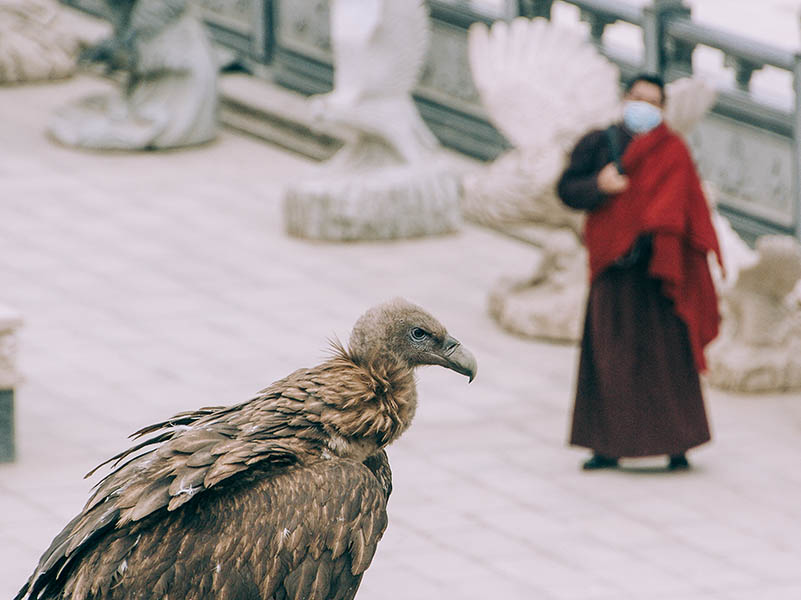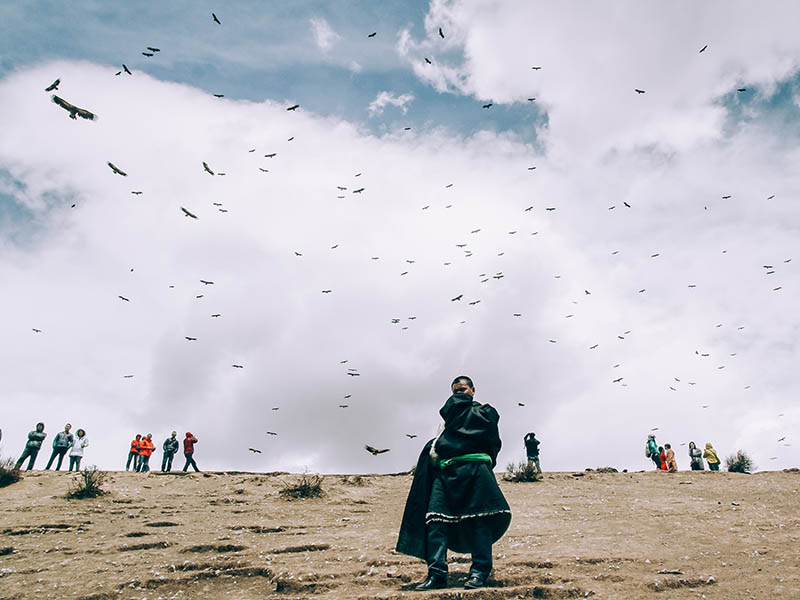
Sky Burial, Wylie ; Bya gtor lit .bird-scattered is a funeral practice in which a human corpse is placed on a mountaintop to decompose while exposed to elements or to be eaten by scavenging animals especially carrion birds like vultures and corvids

Sky Burial (Bya gtor): The Sacred Ritual of Returning to Nature
Sky Burial, known in Tibetan as Bya gtor, literally meaning “bird-scattered,” is an ancient and deeply spiritual funerary practice rooted in Tibetan Buddhism. Rather than burial or cremation, the deceased’s body is placed on a mountaintop or an open, elevated ground to decompose naturally or to be consumed by scavenging birds, primarily vultures and other carrion birds such as corvids. This ritual, which may seem macabre from a Western perspective, is viewed in Tibetan culture as an act of compassion and ecological harmony.
The practice of Sky Burial is grounded in Buddhist beliefs about the impermanence of the body and the cycle of rebirth. In Vajrayana Buddhism, particularly as practiced in Tibet and parts of Mongolia, Bhutan, and Nepal, the body is considered a mere vessel — a temporary container for consciousness. At death, the soul or consciousness (called namshé) departs, and the body is no longer needed. Therefore, offering the remains to scavenger birds is seen not only as a final act of generosity but also as a symbolic gesture that reflects detachment from physical form and material possessions.
Typically, the ritual begins after a monk or spiritual figure determines the most auspicious time for the ceremony, often based on astrological signs and spiritual guidance. The body is wrapped and transported to a designated Sky Burial site, known as a durtro, often located high in the mountains, far from populated areas. These sites are sacred spaces where nature and the spiritual realm are believed to converge.
Once at the site, trained practitioners known as rogyapas (“body-breakers”) carry out the disassembly of the corpse. This process may involve slicing the flesh and even crushing bones to make the remains more accessible to the birds. The vultures, seen as dakinis — sky spirits or angelic beings — descend upon the site to consume the body. The swift consumption of the body is often interpreted as a sign of the deceased’s good karma, while hesitation or rejection by the birds may be viewed as a bad omen.
Sky Burial has practical considerations as well. In the harsh, rocky terrain of the Tibetan Plateau, arable land is limited and wood for cremation is scarce. The freezing climate also makes burial difficult. Thus, Sky Burial evolved as a pragmatic yet profoundly spiritual solution, emphasizing the cyclical nature of life and death.

Despite modernization and government restrictions during parts of the 20th century, especially during China’s Cultural Revolution, Sky Burial remains a respected and sometimes practiced ritual in Tibetan communities. In recent years, efforts to preserve and understand this tradition have grown, with anthropologists and ecologists studying its ecological significance and cultural depth.

Sky Burial offers a striking example of how spiritual belief, ecological awareness, and cultural tradition intersect. It is a powerful reminder of our place within the natural order — that in death, we do not simply vanish, but return, quite literally, to the earth and sky. By feeding the birds, the dead provide sustenance to living creatures, completing the cycle of life with humility and reverence.

Leave a Reply